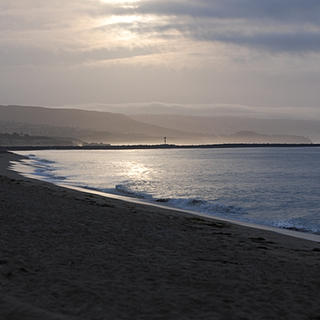Food Waste in the U.S.
- OC Habitats
- May 22, 2023
- 4 min read
Food waste is defined as safe, high-quality food that is discarded rather than consumed. Around the world, food loss and waste (FLW) continue to be an ever-growing issue in the natural and human world. Feeding America states 119 billion pounds of food is wasted yearly in the United States. That means nearly 40% of the food produced, perfectly fine for human consumption, is never eaten and is instead thrown away! In addition to consumer food waste, resources are wasted at every stage of the farm-to-kitchen supply chain. It is apparent that our current system for food production and consumerism is not sustainable for the environment. The aim of this article is to increase awareness about the impacts of food waste and ways to reduce food waste.
According to a food waste Environmental Impact Report (EIR) by the Environmental Protection Agency (EPA), greenhouse gases (GHG) are emitted at every stage of the food supply chain. The stages of our food supply chain include primary production, distribution and processing, retail, and consumption. Primary production includes the rearing and slaughter of livestock animals and the growth and harvesting of crops. This stage produces the greatest GHG emissions and environmental impacts due to use of agricultural land, amounting to the size of New York and California combined, pesticides, and fertilizers. GHG emitted during primary food production is solely responsible for 39% of all methane emissions and a staggering 80% of all nitrous oxide emissions in the U.S.! Methane is damaging because it traps more heat in the atmosphere compared to carbon dioxide, so it comes as no surprise that more than 25% of the current global warming is attributed to methane. Nitrous oxide damages the atmosphere by depleting the ozone layer that defends the planet against the sun’s damaging radiation and can stay in the atmosphere for an average of 114 years.
Besides the primary production stage, the consumption stage also greatly pollutes the atmosphere. In the U.S., food waste is the most prevalent material in landfills. It rots and releases a significant amount of methane into the air. The distribution stage is where products are physically transported from the manufacturer to the end consumer or retailer. This stage involves a series of logistical processes, including transportation, warehousing, and inventory management which consumes a significant amount of energy and resources. When we throw away food, we waste all the water and energy necessary to grow, package, and transport food from the farm to our plates. What comes around, goes around. The effects of food waste are being felt by many across the U.S., especially in low-income communities. FLW can have significant and negative impacts on low-income communities, including hunger and food insecurity, environmental pollution economic strain, and social exclusion. Addressing food waste and creating more sustainable and equitable food systems is crucial to addressing these impacts and promoting social and economic justice.

It is imperative that we take a more sustainable approach to prevent unnecessary FLW. One way to reduce FLW is to take food waste to your local community garden’s compost pile. In Long Beach, a community garden located at 3709 East 10th St (named Zaferia Junction Community Garden) allows neighbors in the community to dispose of their organic food waste in their compost piles. The pile is turned every week by neighborhood gardeners and mixed into the soil for gardening. Currently, there are more than 20 community gardens in Orange County. Do bear in mind that the rules and regulations are different for every garden. To learn more about community gardens in OC, check this out! This link will take you to a contact list for different community gardens in OC where you can inquire about how they work. Keep in consideration that there is compostable as well as NON-compostable food waste. This site, by the Arizona Department of Environmental Quality, will tell you exactly what can and can’t be composted!

Another way to prevent FLW is to simply assess your needs and wants before buying something at a grocery store. More often than not, food is wasted when we purchase more than we need, improperly store it, throw away leftovers, and cook too much. A third way to prevent FLW is to learn what the date labels mean on packaged food. We all know that date labels can be so confusing, and no one really knows the exact differences between ‘Sell by’, ‘Use before’, and ‘Expires on’. According to the U.S. Department of Agriculture (USDA), ‘Best if used by/before’ indicates when a product will be of the best flavor or quality. It is not a purchase or safety date. A ‘Sell-by’ date tells the store how long to display the product for sale for inventory management. It is, again, not a safety date. A ‘Use-by’ date is the last day recommended for the use of the product while at peak quality. It is not a safety date except for when used on infant formula. Lastly, ‘Freeze-by’ dates indicate when a product should be frozen to maintain peak quality. Once again- it is not a purchase or safety date. Confusing right? That is why standardized date labels and consumer awareness are so, so important to keep people from mistakenly throwing out food that is perfectly fine to consume!
ReFED, a nonprofit aimed at reducing U.S. food waste, reports that these benefits include consumer savings, feeding low income-communities, job creation, business profits, lower tax burdens, and environmental protection. Overall, both wildlife and human communities can greatly reap the economic, social, and environmental benefits of preventing and reducing FLW.
Check out ReFED and their awesome research here.
Check out Long Beach Organics and their cool gardening work here.
Check out free resources by UCCE Master Gardeners of Orange County for composting your own food here.
Check out this extensive 2021 U.S. FLW report here.







Comments